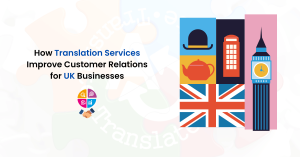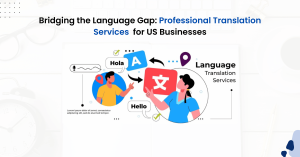It exists in over 20 different sign languages in the world: Irish Sign Language (ISL), English Sign Language (ESL), American Sign Language (ASL), French Sign Language (LSF), Spanish Sign Language (LSE), Italian Sign Language (LIS), etc.
There are approximately 3,000 deaf people using ISL in Ireland and 35,000 people who use it on a daily basis. This language has been developed by deaf people themselves and the sign language is still not recognized as a language in Ireland. The Irish Deaf Society (IDS) is fighting for more than thirty years to get ISL recognized. Hearing loss is invisible but it isolates people socially. The recognition of ISL will help deaf people get better services and improve their integration into society.
Take a walk in somebody else’s shoes
Have you ever tried to listen to music without the sound? Nonsense, you probably think but it is what happens to deaf people. Even if the person can feel the vibrations of the music, they don’t have access to music like a hearing person. Amber Galloway Gallego, an American woman, has decided to dedicate her life to interpret songs for deaf people. Although not deaf herself, she has close relationships with members of the deaf community. She interprets music in ASL (American Sign Language) during music festivals or concerts and is able to perform music by more than 400 artists. She explains online what she does to interpret music. The grammar in sign language is different so she didn’t try to sign exactly the same sentences word by word. Her objective is only to make sense visually. She not only interprets the lyrics but also the instruments.
How to learn sign language
When you learn a sign language, you have to first memorize the “fingerspelling” or “dactylology”. It is a visual representation of the alphabet. One letter is assigned to one sign. It is useful for spelling your name, a place which doesn’t have a direct translation or a word that you don’t know the sign.
To be precise when you sign, keep these in mind:
- Handshape
2. Location
3. Movement
4. Orientation (palm orientation): up, down, forward, side, back, etc.
If you change one of these parameters, it can completely change the meaning of what you are trying to say.
Interactive learning
Now that you have some information about sign language, why not try to sign by yourself? Come on, let’s practise a little bit. You probably know this English singer, ginger hair who made a small cameo recently in Games of Thrones. Yes, Ed Sheeran. So, think about his last song: Galway Girl. You can hear it in your head. Perfect. Now, let’s try to learn it in Sign Language.
I will describe a part of the song sentence by sentence, word by word.
1st Line.
She played the fiddle in an Irish band:
(She): finger-point, (played): use you “fingerspelling”, make two “J” with your both hands and repeat the movement, (fiddle): simply imitate a fiddle, (in): one hand horizontally flat and the other goes below the first one, (Irish): one hand horizontally flat, with the other one form rabbit’s ears and made small circles above your first hand, (B-A-N-D) use the “fingerspelling” and spell it, from your right to your left. Your interlocutor will read your letters from the left to right as when we read. It doesn’t matter if you are right-handed or left-handed.
2nd Line.
But she fell in love with an English man
(She): finger-point, (fell in love): one hand finger pointing upwards then touch your other hand vertically flat, (with) self-hand shake, (an English man): start by doing a cockscomb on the top of your head then touch your bust.
3rd Line.
Kissed her on the neck and then I took her by the hand
(Kissed): Form a duck’s beak with your hand, start the movement in front of your mouth and then join your other hand (also in form of duck’s beak) in front of you, (on the neck): finger pointing touch your neck, (took): with you both hands do as if you catch something, (by the hand): both hands vertically flat and drag one over the other.
4th Line.
Said, “baby, I just want to dance”
(Said): finger-point on your bust, (baby): Thumbs-up, hands joined made small movements with your thumbs, (want): both hands made a “W” horizontally and move towards yourself, (dance): one hand horizontally flat which represents the floor and made an upside-down “V” with the other above the floor one and dance.
5th Line.
My pretty little Galway Girl
(pretty): pass your open hand in front of your face, (little) finger-point small movement from your mouth to forward (G-A-L-W-A-Y): use the “fingerspelling” and spell it, (girl): rub your thumb twice on your cheek.
To progress and be more fluid in your movements, there is no secret: just practise. I have detailed the video of Jacob Grkman that you can find online https://www.youtube.com/watch?v=lm3B7PYLLAk.
Useful tips if you are a novice deaf interpreter
I hope I gave you the desire to meet and join this community. To finish, here are some tips that can be useful if you attend an event with deaf people or you are a novice deaf interpreter.
– Wear plain clothes. Sign language is a visual language so it allows your interlocutor to focus on your hands and no to be distracted by your clothes.
– Avoid putting too much jewellery or rings. It also can distract the attention of your interlocutor.
– Use a round table for your meeting, especially if many people attend the event. A roundtable allows everybody to see each other and avoid to exclude someone.
– Pay attention to the contrast. If you are talking in front of an audience, be careful that you don’t wear for example a white shirt with a white wall behind you.
– Call a deaf person. If you enter a room and your interlocutor is, for example, focusing on his laptop and doesn’t see you. You can try to make a sign with your hand or to dance but you will probably not catch his attention. What you can do is stamping your feet, he will feel the vibrations in the ground. You can also snap the light on and off, slap him on the shoulder or blown on him.
https://www.youtube.com/watch?v=EuD2iNVMS_4
https://www.deafhear.ie/DeafHear/mediaCentreCommunities.html
http://www.clarion-uk.com/know-many-sign-languages-world/
http://mentalfloss.com/article/13107/7-things-you-should-know-about-sign-language
http://assistivetechnologyblog.com/2016/06/can-deaf-people-hear-music-answer-yes.html








